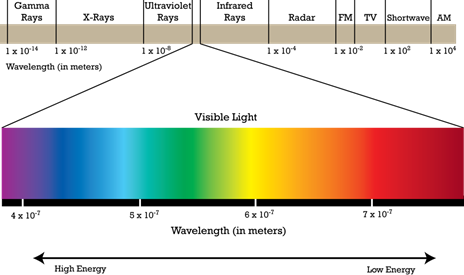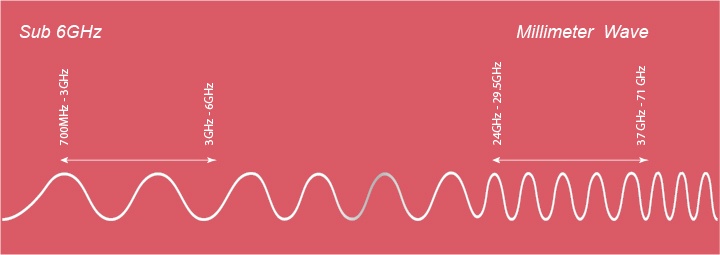You said that the modem can be swapped, but what about antenna modules? Are they integrated in the modem? And does the phone only have one? AFAIK 5G networks rely heavily on 5GHz and beam-forming which means at least two antennas, preferably 3 or more.
What makes it unhealthy? They don’t have enough energy to ionize anything, they can’t damage DNA, and their penetration is mediocre.
The antennas for the modem (and WiFi/BT/GNSS) will be part of the case and case design. The final design is not yet done so I can not confirm anything in this regard, just that the antennas will not be part of the M.2 cards.
Cheers
nicole
it would be nice to give people the option to mount external antennae to strengthen signal reception for 3g/4g portable modem/router use cases. so far only very few proprietary options exist with external antenna routers with integrated sim options.
a 4g router scenario for the librem 5 would be pushing it too far in terms of heat output in load i imagine but i can see a 3g router a viable alternative for the librem 5.
Might seem dumb but maybe someone out there who sees the interest of an external antenna will make a (hopefully FLOSS) USB antenna?
Penetration is not the issue, absorption is.
Feldman Y, Puzenko A, Ben Ishai P, Caduff A, Agranat AJ. Human skin as arrays of helical antennas in the millimeter and submillimeter wave range. Phys Rev Lett, 2008; 100(12):1-2
Feldman Y, Puzenko A, Ben Ishai P, Caduff A, Davidovich I, Sakran F, Agranat AJ. The electromagnetic response of human skin in the millimetre and submillimetre wave range. Phys Med Biol, 2009; 54(11):3341–3363
Gandhi OP, Morgan L, de Salles AA, Han YY, Herberman RB, Davis DL. Exposure limits: the underestimation of absorbed cell phone radiation, especially in children. Electromagn Biol Med, 2012; 31(1):34–51
Hayut I et al. The Helical Structure of Sweat Ducts: Their Influence on the Electromagnetic Reflection Spectrum of the Skin. IEEE Trans Terahertz Sci Technol, 2013; 3(2):207-215
Johansson O. Electrohypersensitivity: a functional impairment due to an inaccessible environment. Rev Environ Health 2015; 30(4): 311–321
Kato Y, Johansson O. Reported functional impairments of electrohypersensitive Japanese: A questionnaire survey. Pathophysiology, 2012; 19(2):95–100
Kawase K, Hayashi S. THz techniques for human skin measurement. Infrared, Millimeter and Terahertz Waves (IRMMW-THz), 2011 36th International Conference on Infrared, Millimeter, and Terahertz Waves (IRMMW-THz 2011) Houston, USA; 2011
Knuttel A, Bonev S, Knaak W. New method for evaluation of in vivo scattering and refractive index properties obtained with optical coherence tomography. J Biomed Opt, 2004; 9(2):265–273
Lademann J, Otberg N, et al. Application of optical non-invasive methods in skin physiology: a comparison of laser scanning microscopy and optical coherent tomography with histological analysis. Skin Res Technol, 2007; 13(2):119-132
McCarty DE, Carrubba S, Chesson AL, Frilot C, Gonzalez-Toledo E, Marino AA. Electromagnetic hypersensitivity: evidence for a novel neurological syndrome. Int J Neurosci, 2011; 121(12):670–676
Schröttner J, Leitgeb N. Sensitivity to electricity-temporal changes in Austria. BMC Public Health, 2008; 8:310
Shafirstein G, Moros EG. Modelling millimetre wave propagation and absorption in a high resolution skin model: The effect of sweat glands. Phys Med Biol, 2011; 56(5):1329–1339
Tripathi SR, Miyata E, Ben Ishai P, Kawase K. Morphology of human sweat ducts observed by optical coherence tomography and their frequency of resonance in the terahertz frequency region. Sci Rep, 2015; 5:9071
@Vtomic, every reference from your list takes upwards of $30 to read. Not useful for the discussion at hand.
Not true, I had no trouble finding “free” copies, some examples:
Exposure Limits: The underestimation of absorbed cell phone radiation, especially in children
Frequency of the resonance of the human sweat duct in a normal mode of operation
Potential Risks to Human Health Originating from Future Sub-MM Communication
Systems
One has to dig, sources cited are for a reason.
In the interaction of microwave radiation and human beings, the skin is traditionally considered as just an absorbing sponge stratum filled with water. This approach is justified when the impinging wavelength is greater than the dimensions of the skin layer. However, in the sub-THz band this condition is violated. In 2008, we demonstrated that the coiled portion of the sweat duct in upper skin layer could be regarded as a helical antenna in the sub-THz band. The full ramifications of what these findings represent in the human condition are still very unclear, but it is obvious that the absorption of electromagnetic energy is governed by the topology for the skin and its organelles, especially the sweat duct.
i’ll be blunt - for someone that isn’t used to read scientific studies in the domain you cited - it’s darn near impossible to get a clear picture of what is at stake here.
in laymens terms i think what this “absorbtion” word means in this case could be better understood by simply imagining the following scenario.
one man lays on the ground different stone slabs by varrying densities and sets up above each stone a mechanism that drips water dropplets at same time intervals with the same volume per drop of water then over time he measures how each stone slab is influenced by the falling drops. this is done over the course of a few thousan years in order to have a clear indication or can be accelearated through concentrated water jets that are closely monitored in the same equal manner as with the droplets.
this example is far feched as it is about something else entirely but maybe it can spur some ideas in readers about the complex issues involved here.
my point is that like the stone material each human body is slightly different overal regarding exposure tolerances but each body will get affected for SURE more or less depending on the individual conditions. better safe than sorry !
Sure, the body absorbs waves of this frequency, but all it amounts to is those waves being able to vibrate some polar/water molecules at most which would generate heat. Just standing outside is probably more harmful because you’d be actually taking in UV radiation which is actually ionizing.
Stuff like Wifi that is in the 2.4 GHz frequency range, has a wavelength of 125 million nanometers which corresponds to 1/100,000 of an electron volt, whereas ultra violet is anywhere between 3.1-10 eV.
A human body emits infrared at a wavelength of 12000 nanometers, which corresponds to 0.1eV. So just standing next to someone would result in more energy transfer/absorbtion than your regular wifi.
If I accept that is has harmful effects, then how harmful are these effects relative to other things? Just saying you have a higher chance of contracting or developing something doesn’t mean anything if the chance is already low. It’s very easy to make statistics and numbers misleading. The excerpt you quoted for example mentions they use a “sub-THz” band for their experiment. THz is 10^12, whereas MHz is 10^6, THz isn’t even used as a business band, and the highest frequency is like 500MHz.
Energy absorbed must be dissipated, 5G will increase our exposure thus our need for our body to respond to this new spectrum.

All the studies are flawed, which gives pause does it not? Why would scientists conduct a study that they know is not going to stand up on its own?
I know enough to know that the experts have agendas. I would be looking to see what those experts do and not say for their loved ones.
Hint, “carve out” areas are for aesthetic reasons not because 5G is harmful.
Keep your area beautiful, live in a carve-out 5G area.
Can’t afford it, enjoy the new 5G look coming soon to your neighborhood as trees, bird nests, abstract artwork, and more.
See, they care, they really do.
Health issues of 5G aside, a subject very worthy of debate, i don’t see 4G going away for a long time, longer than a decade or even two. 5G is short-range and not suited for rural areas, and even some rural areas don’t even have 4G yet. US carriers are rebranding their 4G LTE networks as “5Ge”. It will be in use for a long, long time, unless some kind of long-range 5G/6G is developped to replace 3/4G.
This is not quite true. In addition to the new high frequencies, 5G re-uses some of the traditional microwave frequencies, which carry for kilometers, making it suitable to deploy in rural areas.
This says literally nothing about the harmfulness of 5G.
Exactly, what it does say is nature has limited the range of those frequencies and thus exposure, is nature being benevolent here or can we muck around in certain frequencies without ramifications?
It doesn’t say either. It literally says “it’s unclear”.
For comparison, nature has limited the range of visible light: it doesn’t go through walls, is very well absorbed by human bodies, and is much more energetic than microwaves, yet we muck about it to our hearts’ content.
The energy of a 5G (60GHz) photon is about 10000 times smaller than that of a red light photon (430THz), if anyone’s curious.
Humans manipulate energy for desired outcomes, in this case, calling these electromagnetic radiation energy ranges 5G.
Electromagnetic radiation waves arrive through electric and magnetic fields, differing only in wavelengths and frequencies, named based on their frequency ranges.

Electromagnetic waves (energy) require no medium for propagation, so in a vacuum travel at the speed of light.
Energy is never destroyed but transformed from one form of energy into another.
GSMA recommends supporting 26 GHz, 40 GHz and 66-71 GHz bands for mobile.
5G will likely come as a spectrum within three key frequency ranges:
- < 1 GHz will support widespread coverage across urban, suburban and rural areas and help support Internet of Things (IoT) services
- 1-6 GHz offers a good mixture of coverage and capacity benefits. This includes spectrum within the 3.3-3.8 GHz range which is expected to form the basis of many initial 5G services
- => 6 GHz is needed to meet the ultra-high broadband speeds. Currently, the 26 GHz and/or 28 GHz bands have the most international support in this range.
I posted the above to arm all of you with known facts. Don’t make more out of 5G than it is, energy, that we will have to transform once it hits us.
I wish the scientists with all the endowments would go back to real science and not agenda-science, but that is just that, a wish.
Without real trustworthy science, we must decide for ourselves what is what.
I hope this helps all of you, in some small way, because trust is no longer possible given the reality today. But you all know that don’t you, otherwise, why would you be supporting Purism, I applaud you for that.
Heres to life, may it transform absorbed 5G energy into something beneficial, or at least harmless.
You are correct, the energy absorbed must be dissipated.
The absorbed electromagnetic waves are transformed into heat in our bodies (no other mechanism has been found for non-ionizing radiation). Tiny, tiny, tiny amounts of heat - so tiny in fact, that it is not possible to measure them.
Lucky for us, nature has armed us (and all other vertebrates amongst many other forms of life) with a system to dissipate the heat we absorb from our environment.
That system works quite well, which allows us to live and function in climates ranging from 50 Kelvin below to 20 K above our body temperature.
Also, lucky for us, scientists are in general smart and honest people, doing the best they can, and bringing us incredible knowledge.
On the other hand, we of course also have people who just decide for themselves, make up facts as they go along, and enrich small factoids with their own flavor of misinformation; but such is life.
No, 5G will not replace LTE in the foreseeable future, it will largely enhance it.
For one, in the currently use frequency range, below 3 GHz, which is the only range suitable for covering larger areas, 5G is so similar to LTE, that it is barely distinguishable.
For the next few years, 5G will in general be a speed-boost enhancement for existing LTE networks in small, dense, areas (think shopping malls, football stadiums, and so on).
LTE networks will certainly be the main technology of cell phone access for the next 5 years, likely longer.
Even then, 5G will likely not replace LTE for major coverage cells in the next 10 years, though we will see a portion of lower-frequency spectrum (below 1 GHz) refarmed from LTE to 5G.
Contrary to medial reception, major 5G networks are still some years out and there is no point to worry about obsolescence.
